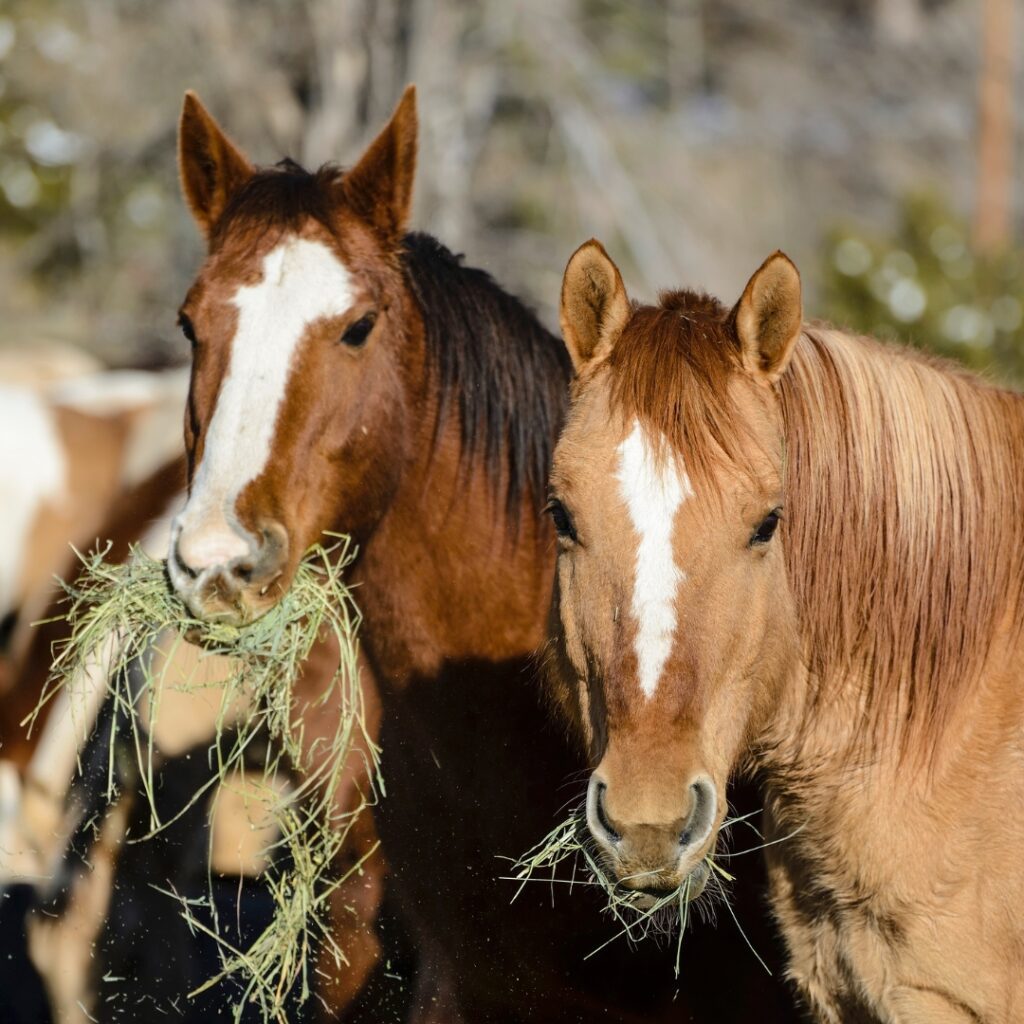
Part of the reason I wanted to work in equine nutrition was my keen interest in equine metabolic syndrome (EMS). Through some of the educational content creation that I do I have the absolute honour and pleasure to talk about these topics with world-leading experts in the field. Recently I met with Dr. Andy Durham to discuss hyperinsulinemia-associated laminitis (HAL) – commonly referred to as endocrinopathic laminitis.
We first discussed the three main types of laminitis – sepsis-based laminitis, excessive weight bearing and endocrinopathic. He noted that the term we are more commonly using for endorcrinopathic laminitis is hyperinsulinemia-associated laminitis as it is more specific. The term endocrinopathic tells you that it stems from a hormonal disturbance, but when we term it hyperinsulinemia, it is telling you what that hormonal disturbance is.
Dr. Durham noted that it is very clear and indisputable that hyperinsulinemia causes laminitis, but what we aren’t quite as clear on is how. He explained that the favoured explanation is that the IGF1 (insulin-like growth factor 1) receptors in the hoof would not normally be interfered with by insulin. However, when you have high blood insulin these receptors are stimulated which disturbs the laminar attachment.
When discussing the risk factors for HAL, Dr. Durham divided cases into three broad categories.
1) PPID
2) Equine Metabolic Syndrome
3) Veterinary Use of Glucocorticoid Drugs
His main point in discussing these clear categories is that they are not mutually exclusive. All three stimulate blood insulin levels and therefore can trigger laminitis. Overall, they work through the same mechanisms. The example he used, is that when a fit thoroughbred is given a steroid drug, the risk of laminitis is quite low. However, if you combine these categories, for example if an EMS pony is given a steroid drug, then the risk of laminitis is much greater.
For myself, the most interesting part of this interview was the discussion about the dietary management of these at-risk horses. He noted that he was involved in the group of experts that assigned that guideline of below 10% NSC in the diet, but he doesn’t like to rely on that, and the industry is moving away from relying on that guideline.
He noted that the horse owner should never forget that you still require sugar to stimulate an insulin response, therefore, without sugar there is no insulin response. He stressed that every horse is individual in their post-prandial insulin response to various sugar levels and that instead of relying on a dietary percentage we should be testing their blood insulin levels to ensure they are within ideal ranges.
Another topic we discussed in the interview was the calculation of non-structural carbohydrates. Some companies have suggested that to calculate NSC you can use ethanol-soluble carbohydrates + starch. I have personally never used this as I always use water-soluble carbohydrates + starch to include the fructans. When discussing this with Dr. Durham, he said that he would be part of the group that uses the WSC + starch as he knows that fructans have been shown to cause an insulin response in the horse.
To conclude, he highlighted that sugar is not what causes the laminitis, the insulin does. So instead of relying on a guideline for the sugar content of the diet, why don’t we move towards testing the insulin and ensuring our low-sugar diet is adequate for that animal. Read about Dr. Andy Durham below:
Andy graduated from Bristol in 1988 and after two years in mixed practice started in ambulatory equine practice in the Midlands. He gained the RCVS CertEP in 1993 before moving to Liphook Equine Hospital in 1994, becoming a partner in 2001. This was followed by the RCVS diploma in equine internal medicine in 2003 and European diploma in equine internal medicine in 2004. Andy has continued to perform a little first opinion ambulatory work although he now mainly works in the new hospital at Liphook with medical in-patients and the diagnostic laboratory. He has recently been appointed as visiting professor at the University of Surrey, Guildford and is involved in the development of a new veterinary school there. Andy’s main professional interests are in endocrine disease, liver disease, dermatology, infectious diseases and most other aspects of internal medicine.
Some examples of his published research:
Counotte, G., Durham, A., Vandendriessche, V., & van den Wollenberg, L. (2022). Haptoglobin, Magnesium, Adiponectin, and Leptin as Biomarkers for Obesity and Insulin Dysregulation in Horses: Relation of Biomarkers with Obesity and Insulin in Horses. International Journal of Equine Science, 1(1), 3-10.
Durham, A. E. (2017). Laminitis in Equine Metabolic Syndrome. Equine Laminitis, 196-203.
Durham, A. E. (2016). Endocrine disease in aged horses. Veterinary Clinics: Equine Practice, 32(2), 301-315.
Durham, A. (2010). The pharmacologic basis for the treatment of endocrinopathic laminitis. Veterinary Clinics: Equine Practice, 26(2), 303-314.